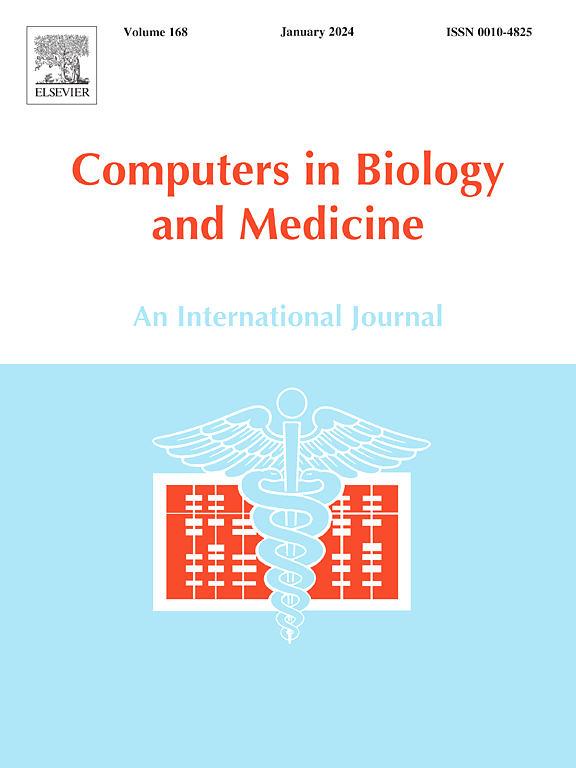A novel deep neural network approach to detect and monitor cocaine drug abuse
IF 6.3
2区 医学
Q1 BIOLOGY
引用次数: 0
Abstract
Purpose
Cocaine is one of the most commonly used drugs that may lead to physical and mental health problems. It is necessary to identify individuals having cocaine use disorder as early as possible to monitor them properly. The objective of this work is to predict the time of cocaine use in scenarios where clinical testing is not possible. The time of cocaine use is defined as how many days before the individual has used cocaine.
Methodology
It is possible to predict the time of cocaine use based on personality traits and demographic information as features. The personality traits (neuroticism, extraversion, openness to experience, agreeableness, and conscientiousness, impulsivity, and sensation seeking) along with demographic information features (education level, age, gender, country of residence, and ethnicity) have been used to predict the time of cocaine use. These features are given as inputs to long short-term memory networks (LSTM) to predict the time of cocaine use.
Findings
The highest F-score for the prediction of time of cocaine use for the LSTM method is found to be 0.99. A comparative study has also been carried out using both deep neural networks and artificial neural networks to predict the time of cocaine use to demonstrate the superiority of the LSTM method. The proposed method shows promising results for predicting the time of cocaine use and can be considered for monitoring the cocaine use disorder.
Practical and social implications
The proposed method will be an efficient tool to identify the mental health of a person if the person has cocaine use disorder. As a result, proper treatment can be given to the individual in time.
Originality
The originality of the work is that it predicts the time of cocaine use with better accuracy. The LSTM method has not been used previously for predicting the time of cocaine use.

一种新的深度神经网络方法检测和监测可卡因药物滥用
可卡因是最常用的可能导致身体和精神健康问题的药物之一。有必要尽早识别有可卡因使用障碍的个体,以便对其进行适当的监测。这项工作的目的是在无法进行临床试验的情况下预测可卡因使用的时间。使用可卡因的时间定义为个人使用可卡因前的天数。方法根据人格特征和人口统计信息作为特征,可以预测可卡因使用的时间。人格特征(神经质、外向性、经验开放性、宜人性、尽责性、冲动性和感觉寻求)以及人口统计信息特征(教育水平、年龄、性别、居住国家和种族)已被用于预测可卡因使用的时间。这些特征作为输入输入到长短期记忆网络(LSTM),以预测可卡因使用的时间。发现LSTM方法预测可卡因使用时间的最高f值为0.99。还进行了使用深度神经网络和人工神经网络预测可卡因使用时间的比较研究,以证明LSTM方法的优越性。所提出的方法在预测可卡因使用时间方面显示出良好的结果,可以考虑用于监测可卡因使用障碍。实际意义和社会意义:如果一个人有可卡因使用障碍,所提出的方法将是一种有效的工具,用于识别该人的心理健康状况。因此,可以及时给予适当的治疗。独创性这项研究的独创性在于,它能更准确地预测吸食可卡因的时间。LSTM方法以前没有被用于预测可卡因使用的时间。
本文章由计算机程序翻译,如有差异,请以英文原文为准。
求助全文
约1分钟内获得全文
求助全文
来源期刊

Computers in biology and medicine
工程技术-工程:生物医学
CiteScore
11.70
自引率
10.40%
发文量
1086
审稿时长
74 days
期刊介绍:
Computers in Biology and Medicine is an international forum for sharing groundbreaking advancements in the use of computers in bioscience and medicine. This journal serves as a medium for communicating essential research, instruction, ideas, and information regarding the rapidly evolving field of computer applications in these domains. By encouraging the exchange of knowledge, we aim to facilitate progress and innovation in the utilization of computers in biology and medicine.
 求助内容:
求助内容: 应助结果提醒方式:
应助结果提醒方式:


